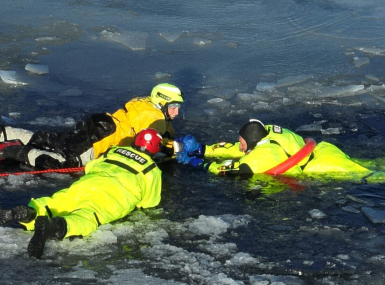‘Sanctuary’ county: embraced by some, disputed label for others
Upcoming Events
Related News

Nearly 300 cities and counties alleged to obstruct federal immigration enforcement policies
Howard County, Md. is the latest jurisdiction being dragged into the debate about sanctuary cities. Two of the county’s five councilmembers introduced a measure to have the county, which lies southwest of Baltimore, declared a “sanctuary county.” Several news media outlets characterized it as the county seeking sanctuary status, which is premature. The bill won’t be voted on until February at the earliest. And If passed, County Executive Alan Kittelman has said he will veto it.
All this comes at a time when the illegal immigration debate is roiling and is expected to result in action by President-elect Donald Trump. He has promised to withhold federal funding from sanctuary jurisdictions.
Though the term is widely used, there’s no legal definition of sanctuary city, county or state. Organizations such as the Washington, D.C.-based Center for Immigration Studies (CIS) define them as jurisdictions that have a “law, ordinance, policy, practice, or rule that deliberately obstructs immigration enforcement, restricts interaction with federal immigration agencies or shields illegal aliens from detection.”
According to CIS, there are about 300 sanctuary cities, counties and states in the United States. This includes several counties that disagree with their inclusion on the list, among them are Chesterfield County, Va. and Clallam County, Wash.
The Howard County, bill introduced by County Council members Calvin Ball and Jennifer Terrasa, calls for “no enforcement” of federal immigration laws and further states that “in the performance of their official duties, an employee shall not engage in the enforcement of the immigration or nationality laws of the United States.”
Ball could not be reached for comment, but in a recent television interview, he said, “We have had some issues whether it’s anti-Semitism, Islamophobia, issues with race against blacks, Hispanics, and that’s not who we are as Howard County. That’s not our values.”
Since the contentious November presidential election, a number of racist social media postings in the county have raised alarms; one of them threatened violence against African Americans.
“I’m hearing from a lot of constituents who feel unsafe and uncomfortable in our own county, and that’s unacceptable to me,” he added.
Ball’s council colleague, Greg Fox, has said the bill is a “solution in search of a problem.” He described Howard County residents as “very pro-immigrant.” The issue isn’t immigrants, it’s illegal immigrants, he told radio public radio host Kojo Nnamdi.
The City and County of San Francisco has what is perhaps one of the earliest sanctuary laws. In 1989, the Board of Supervisors passed an ordinance that bars its government employees from helping Immigration and Customs Enforcement with immigration investigations or arrests unless that help is required by federal or state law or a warrant.
From the counties that dispute being on the CIS list, Chesterfield County Sheriff Karl Leonard said he “takes issue” with being branded a sanctuary by an “independent, arbitrary, nongovernmental organization.”
He said his department enjoys a “very close relationship” with Immigration and Customs Enforcement (ICE) and communicates with the agency “daily,” advising them of all the illegal immigrants being held at the county jail.
“This allows ICE sufficient time to secure legal court orders to detain the illegal immigrant before their release date and then ICE officials can address their illegal immigration status,” Leonard said. “When these papers have been obtained, the Chesterfield Sheriff’s Office has always complied and held the illegal immigrants until picked up by members of ICE.”
Asked if he was concerned about losing federal funds, Leonard said, “No, since we are not a sanctuary county.”
Leonard has contacted CIS about being taken off the list to no avail. Similarly, Clallam County Sheriff Bill Benedict says his requests have been ignored.
“I’ve talked to that organization,” he said, “and I couldn’t be more vehement when I disagree with their assertion. We are in no way or shape a sanctuary county.”
He believes the designation remains for this reason: “We listen to our own state attorney general’s opinion that essentially tells us that unless immigration has an immigration detainer out on someone that includes the little box that says they have probable cause — if that box isn’t checked, we’re not going to turn them over to immigration.”
Johnson County, Iowa is also on CIS’s sanctuary list, and Supervisor Dave Carberry is okay with that. Although the county hasn’t passed a sanctuary ordinance, Carberry calls the liberal, college town — home to the University of Iowa — a “de facto sanctuary,” at least attitudinally. The county created a “community ID” program in 2015.
It’s a local-government-issued photo identification available to residents of Johnson County, regardless of citizenship status.
The ID was established to ensure that “all members of our diverse community are welcomed and can participate fully in the economic and social life of our county.” It costs $8 for adults and is renewable every four years.
Carberry explained that in the wake of the contentious presidential election, the county reasserted its commitment to diversity with a “resolution of commitment to support and protect all residents.”
It reads, in part, “We the Johnson County Board of Supervisors, renew our commitment to: Welcome and protect the rights of all people regardless of age, color, creed, disability, gender identity, marital status, national origin …” and affirm “the right of every person to live peacefully and without fear….”
For the county, which was the first in the state to pass a human rights ordinance, Carberry said the resolution “doubled down that Johnson County is a welcoming community to all religions, all races, all creeds, regardless of documentation.”
Attachments
Related News

County officials moonlight in search and rescue roles
For some county officials, participating in search and rescue operations is another way to serve their communities, and make it safer for people to enjoy natural recreation resources.

SUPPORT Reauthorization Act of 2025: What it means for counties
On December 1, the bipartisan SUPPORT for Patients and Communities (SUPPORT) Reauthorization Act of 2025 (H.R. 2483) was signed into law. The reauthorization renews vital federal funding for programs that seek to prevent opioid overdoses and expand treatment and recovery options.

DHS releases FY 2026 funding opportunities for World Cup and Counter-UAS grants
The U.S. Department of Homeland Security (DHS) and the Federal Emergency Management Agency (FEMA) have released the FY 2026 Notices of Funding Opportunity (NOFOs) for two major new homeland security grant programs: the FIFA World Cup Grant Program and the Counter-Unmanned Aircraft Systems (C-UAS) Grant Program.